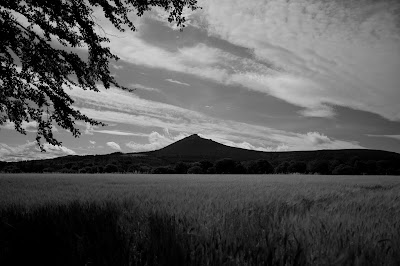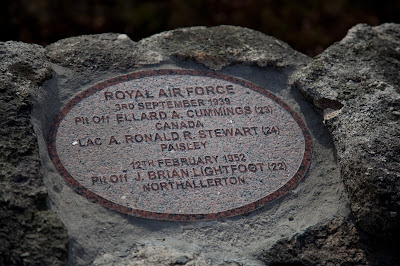The Bailies of Bennachie – by Duncan Harley
For my sins, I am now a Bailie of Bennachie.
After writing about the hill range and the county of Aberdeenshire for a
decade or so, I finally took the plunge and now have an official membership card plus a
car window sticker to advertise the fact.
The duties are of course minimal. I could perhaps volunteer for path work – but thankfully I am too old. I could maybe donate to the worthy cause – but unfortunately, I am too skint nowadays.
So, in the absence of a lottery win I will continue to support the cause by penning some more words about the splendid hill.
The duties are of course minimal. I could perhaps volunteer for path work – but thankfully I am too old. I could maybe donate to the worthy cause – but unfortunately, I am too skint nowadays.
So, in the absence of a lottery win I will continue to support the cause by penning some more words about the splendid hill.
In recent books and articles, I penned tales about the likes
of Jock o’ Bennachie’s long bed over at
Craigshannoch, Pilot Officer Lightfoot’s air-cannon and of course the bewitching
Faeries at Hill Park who, according to Inkson McConnachie were particularly
fond of playing sad tricks with the rustics.
A favourite however
is the tale of George Esson.
He is buried over at Chapel of Garioch and was perhaps the last of the original Bennachie Colonists.
He is buried over at Chapel of Garioch and was perhaps the last of the original Bennachie Colonists.
Described as the
grand old man of Bennachie, George passed away in his 76th
year.
He died at his croft at Boghead, Tullos, a place described as “a humble sheiling surrounded by a croft of six to eight acres which his forefathers had reclaimed from the heather and the wasteland of the hill.”
He came from a long line of settlers who had settled on scrub-land at the base of the hill.
The cottager’s life was by all accounts hard and the oft repeated description ‘three acres and a cow’ provides something of a clue to the hardships of upland crofting life.
To supplement the lifestyle, George had worked as a dry-stane-dyker and from a young age he plied his trade amongst the local farming community. Much of his handiwork can be seen around the district to this day, albeit repaired or in modern-day ruin. The dykes on the Pittodrie Estate and at Dunecht bear silent witness to his skill.
The obituary piece in the local Garioch newspaper records that George was possibly the last of his race. His wife, Mary Ann Knight, had predeceased him and there were no children. The obituary article records that “with the passing of George, the Garioch has lost a personality.”
The newspaper obituary concludes that George “In appearance, was about as rough as his native Bennachie, but he had a kindly and warm heart.” On his headstone are the words: ‘George Esson – Descended from the first and himself the last of the colonists of Bennachie’.
He died at his croft at Boghead, Tullos, a place described as “a humble sheiling surrounded by a croft of six to eight acres which his forefathers had reclaimed from the heather and the wasteland of the hill.”
He came from a long line of settlers who had settled on scrub-land at the base of the hill.
The cottager’s life was by all accounts hard and the oft repeated description ‘three acres and a cow’ provides something of a clue to the hardships of upland crofting life.
To supplement the lifestyle, George had worked as a dry-stane-dyker and from a young age he plied his trade amongst the local farming community. Much of his handiwork can be seen around the district to this day, albeit repaired or in modern-day ruin. The dykes on the Pittodrie Estate and at Dunecht bear silent witness to his skill.
The obituary piece in the local Garioch newspaper records that George was possibly the last of his race. His wife, Mary Ann Knight, had predeceased him and there were no children. The obituary article records that “with the passing of George, the Garioch has lost a personality.”
The newspaper obituary concludes that George “In appearance, was about as rough as his native Bennachie, but he had a kindly and warm heart.” On his headstone are the words: ‘George Esson – Descended from the first and himself the last of the colonists of Bennachie’.
On his death a roup was held to sell off his tools and possessions and a neighbour, a Mrs Smith from Blairdaff, purchased his bee skeps along with his collection of gramophone records.
There are many more such tales in my two books: The A-Z of Curious Aberdeenshire and The Little History of Aberdeenshire. Both are available from Amazon.
Words and colour images © Duncan Harley. Image of George courtesy Bailies of Bennachie













Comments
Post a Comment